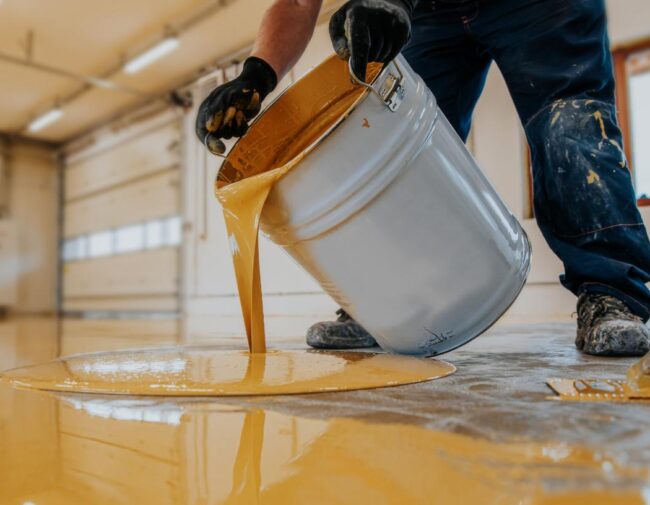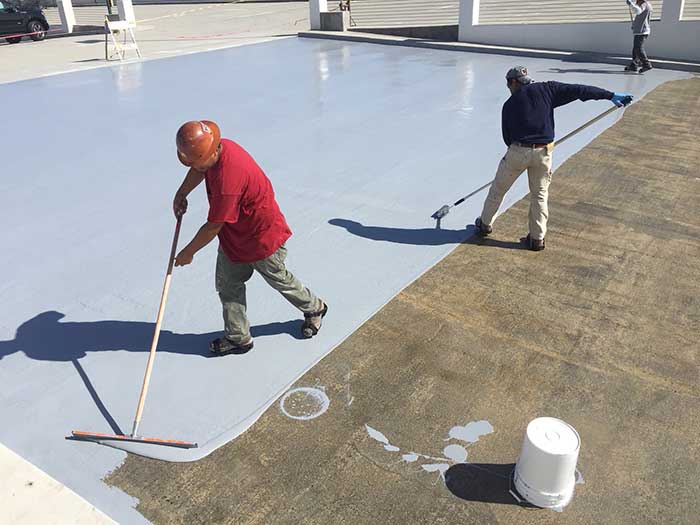"Our epoxy flooring coatings provide superior chemical resistance, perfect for industrial environments."

What is Epoxy Flooring Coatings?
Benefits of Epoxy Flooring Coatings

Durability
Epoxy flooring is highly durable and resistant to impact, abrasion, and heavy traffic. It can withstand wear and tear better than traditional concrete or paint coatings.

Chemical Resistance
It offers excellent resistance to chemicals such as acids, alkalis, solvents, and oils, making it suitable for industrial and commercial environments where chemical spills are a concern.

Easy Maintenance
The smooth and seamless surface of epoxy flooring is easy to clean and maintain. It resists dust, dirt, and stains, requiring only regular sweeping and occasional mopping.

Quick Installation
Compared to other flooring options, epoxy coatings can be installed relatively quickly, minimizing downtime and disruption to operations.

Our Flow of Work
-
Surface Preparation: Proper surface preparation is critical for the success of epoxy flooring. This involves cleaning the concrete surface thoroughly to remove dirt, oil, grease, and any existing coatings. Surface imperfections like cracks or unevenness may also need repair.
- Priming (Optional): Depending on the condition of the concrete and the specific epoxy system used, a primer may be applied to improve adhesion and ensure a smooth application.
- Epoxy Application: The epoxy resin and hardener are mixed according to manufacturer specifications and applied to the prepared surface. This is typically done using rollers, squeegees, or brushes to achieve an even coat.
- Curing: After application, the epoxy coating undergoes a curing process where it chemically reacts and hardens. Curing times vary based on temperature, humidity, and the specific epoxy formulation.
-
Final Inspection: Once fully cured, the epoxy flooring is inspected for uniformity, smoothness, and adherence to quality standards. It can then be put into use, providing a seamless and resilient surface.